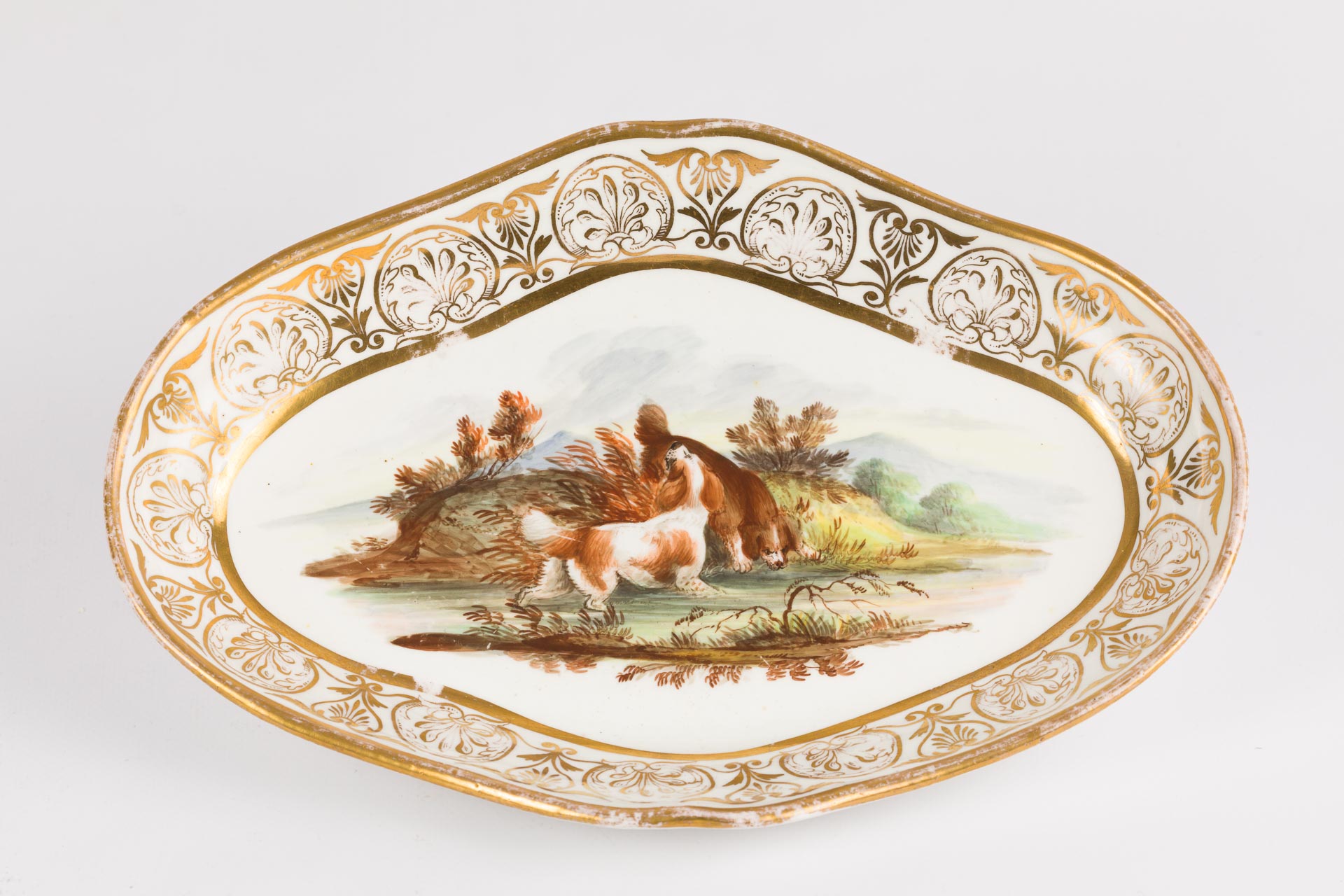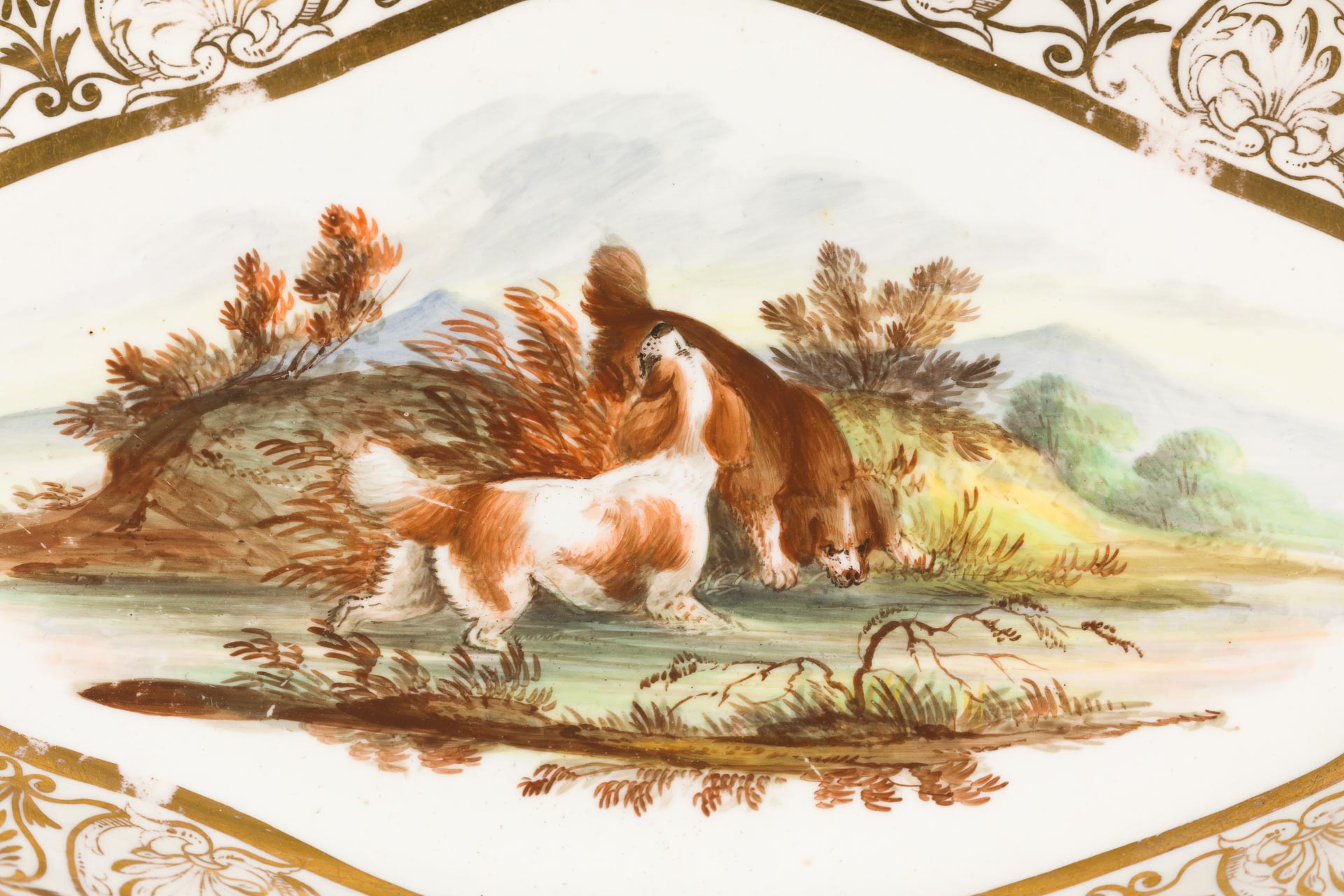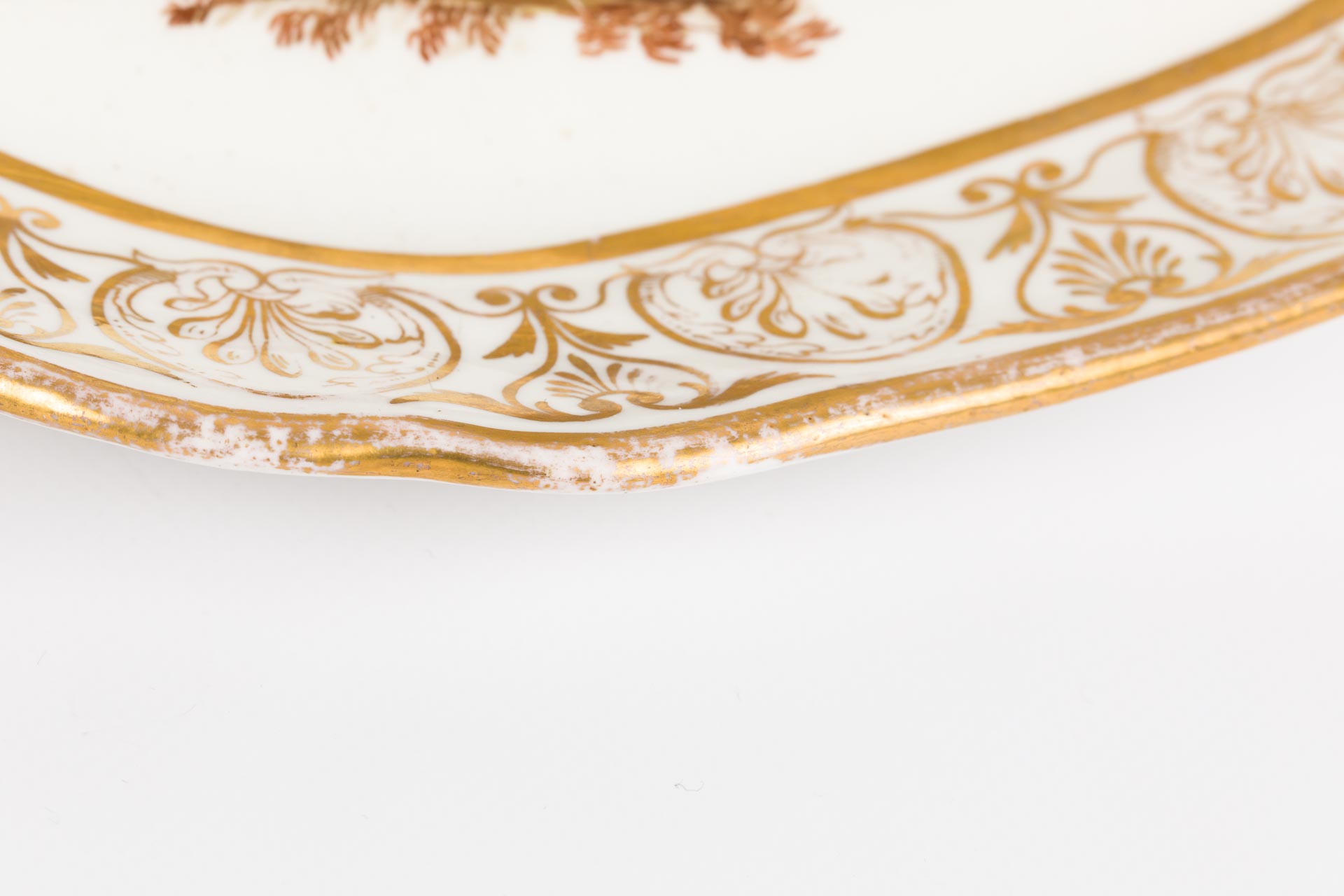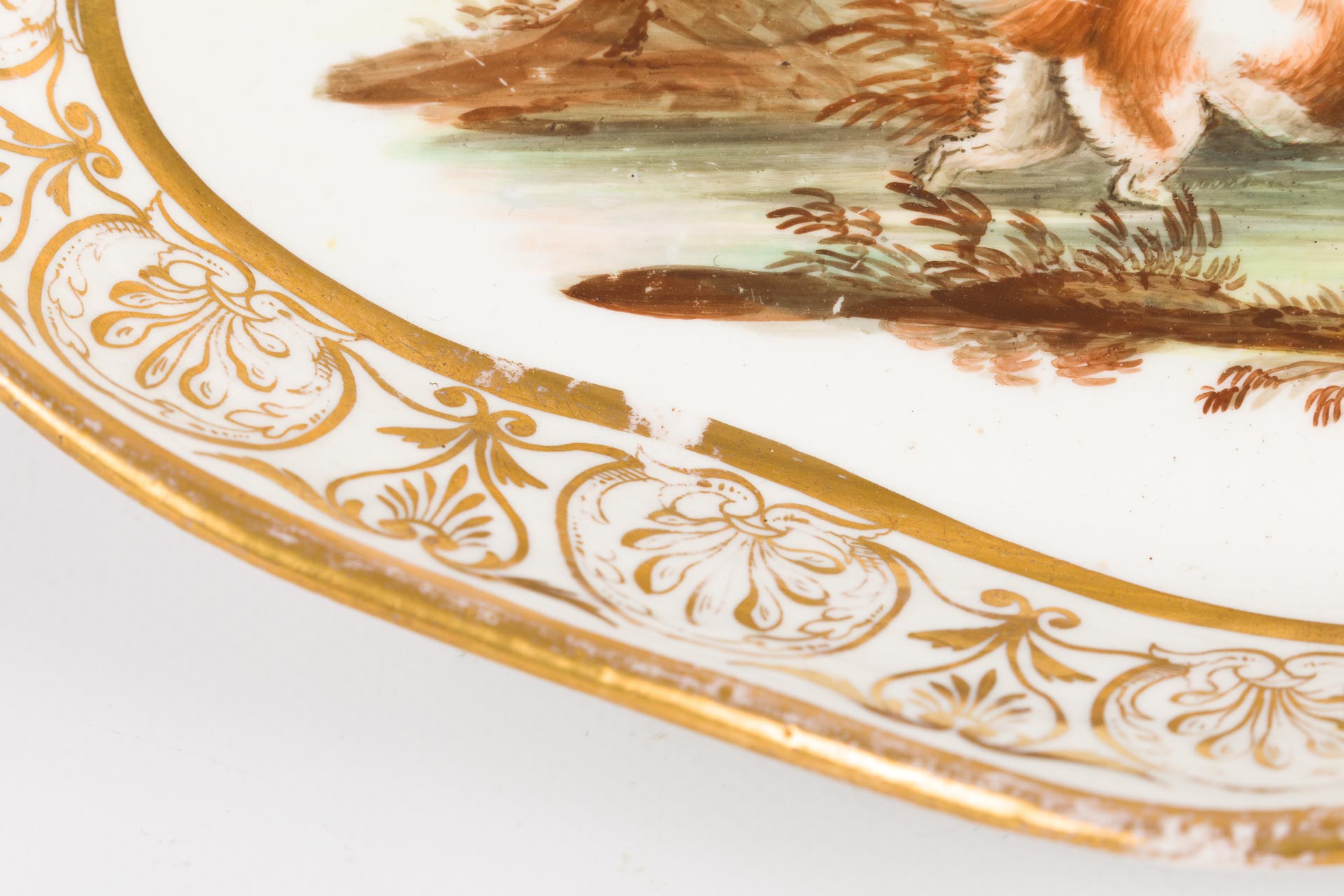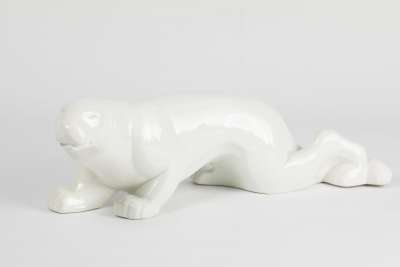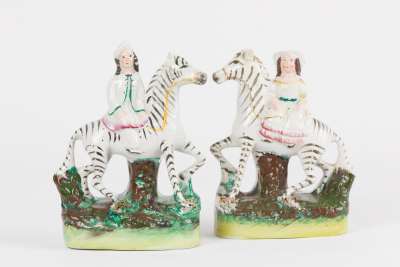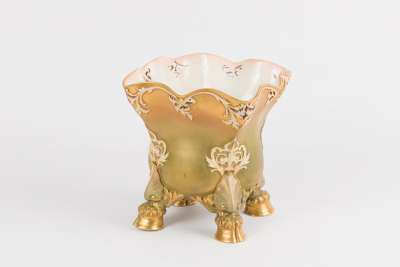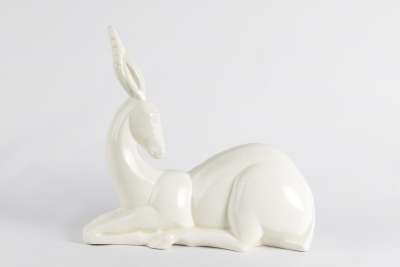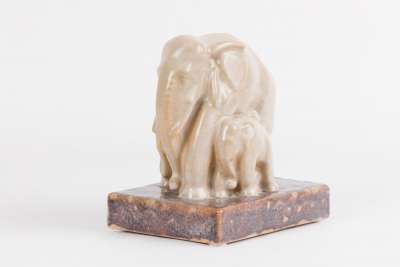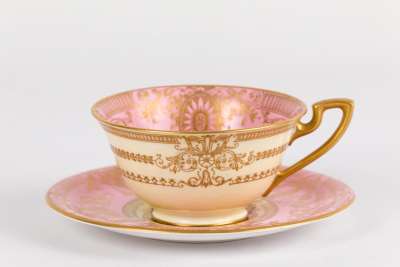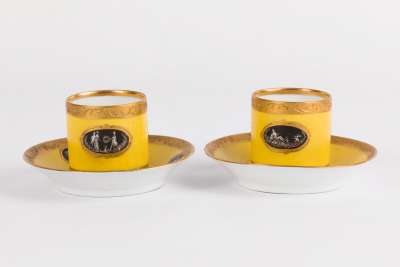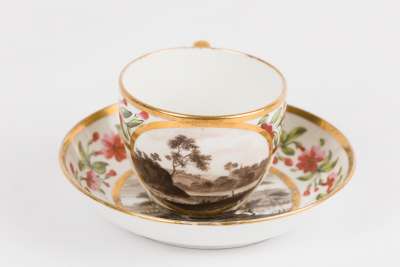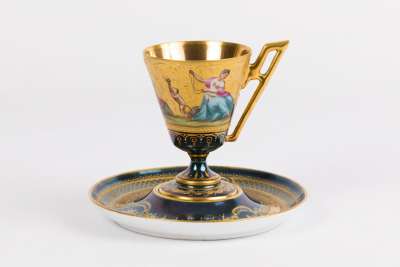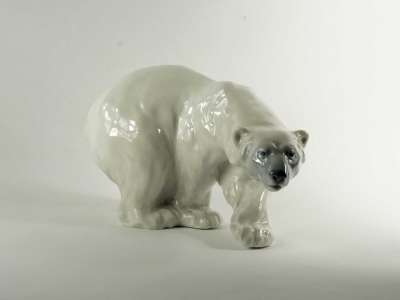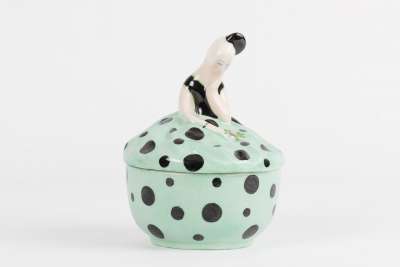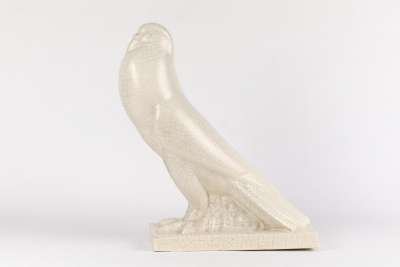The Coalport Spaniel Dish is an elegant lozenge-shaped porcelain piece from the early 19th century, dating approximately between 1800 and 1805. It features an everted rim adorned with anthemion and vegetal borders, which are characteristic of the period's design aesthetics. The centre displays a charming naturalistic scene depicting two spaniels frolicking by a serene lake. Despite the lack of maker's mark, the dish's distinctive style aligns with Coalport's known craftsmanship from the United Kingdom during this era. This piece originates from the Timothy Menzel Collection, adding to its historical significance.
Condition Report
The Coalport Spaniel Dish shows signs of wear consistent with its age and historical use. Notably, there is some loss of gilding, which is common for porcelain items of this vintage. The wear does not detract significantly from its overall visual appeal or historical value. Collectors will appreciate the dish's authenticity, as these signs of ageing are testament to its journey through time. Although unmarked, the dish remains a fine representation of early 19th-century British porcelain. Potential buyers are encouraged to examine the provided images for a more detailed view of its current condition.
Dimensions
Weight: 635gm, Length: 18cm, Width: 9cm, Height: 5cm.
A Decorative Piece for Collectors
Originally, the Coalport Spaniel Dish would have served as a decorative piece, likely gracing the parlours and dining rooms of affluent homes. Its design, featuring spaniels in a naturalistic setting, suggests it was intended to appeal to the tastes of the time, when nature and animal motifs were popular. The dish’s aesthetic and practical qualities would have made it a desirable object for display, as well as for serving small delicacies or confectioneries during social gatherings.
Regency Era Design
This dish is an exemplary piece of Regency era design, which is noted for its elegance and refinement. The anthemion and vegetal border motifs are indicative of the classical influences that were prevalent in the Regency period. This style often incorporated elements from nature, such as the intricate depiction of the spaniels and the lake scene at the centre. The dish captures the essence of early 19th-century British design, reflecting the period's fascination with symmetry, balance, and classical antiquity.
The Craft of Early 19th-Century Porcelain
The Coalport Spaniel Dish exemplifies the porcelain-making techniques of the early 19th century in the United Kingdom. During this time, Coalport was renowned for its high-quality porcelain, which was crafted using a combination of local clays and imported materials. The dish’s intricate designs were likely applied by skilled artisans who employed hand-painting techniques to achieve the detailed naturalistic scene. The gilding, although partially worn, highlights the dish's original opulence and the skilled craftsmanship that went into its creation.
Coalport's Legacy in Porcelain Artistry
Coalport, established in the late 18th century, quickly gained a reputation for producing fine porcelain, and the Coalport Spaniel Dish is a testament to the company's legacy. Although unmarked, the dish's style and craftsmanship align with Coalport's known production methods of the time. The company's commitment to quality and design innovation made it a leading name in porcelain artistry during the Regency period. Collectors may find this piece particularly appealing due to its connection to Coalport’s historical significance and influence on British ceramics.
Collected by Admirers of Regency Porcelain
The Coalport Spaniel Dish is a sought-after item among collectors of Regency porcelain, who appreciate its historical and artistic value. Such pieces are prized for their intricate designs and the stories they tell about early 19th-century British society. Collectors are drawn to the Coalport Spaniel Dish not only for its aesthetic qualities but also for its provenance and connection to historical figures and collections, such as the Timothy Menzel Collection. Its blend of artistic craftsmanship and historical context makes it a valuable addition to any collection of antique porcelain.
